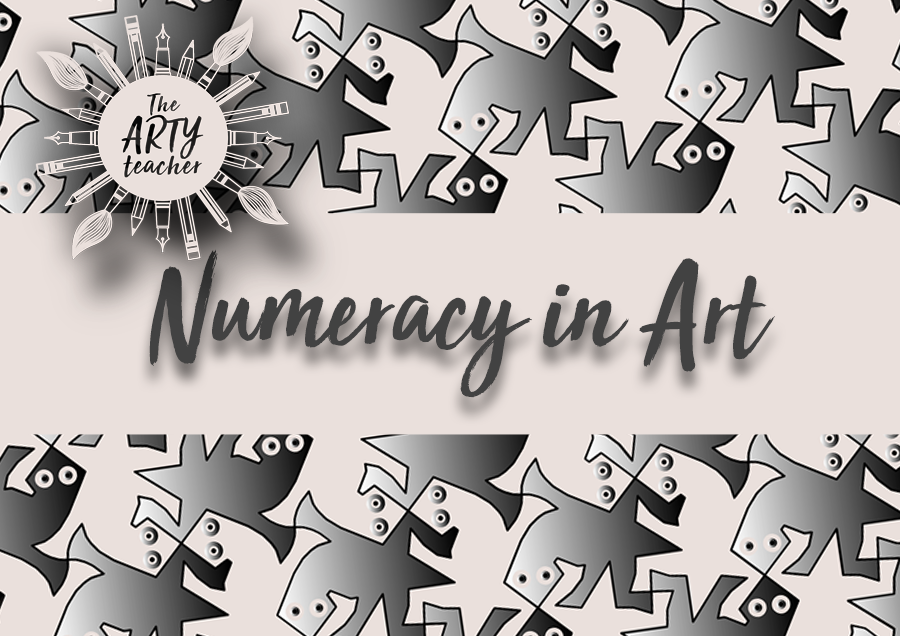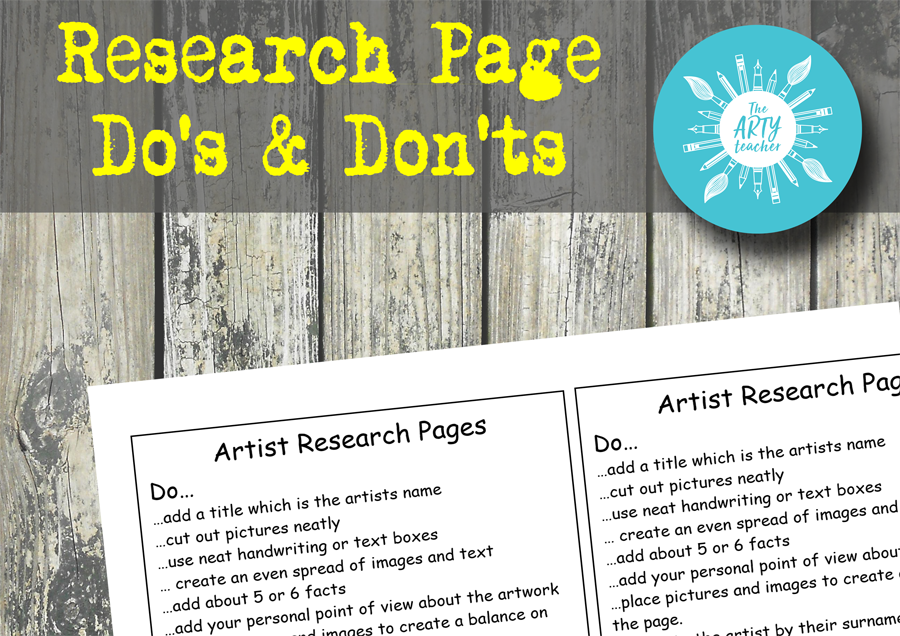
Incorporating Numeracy in Art & Design
At some point in your art teaching career, it is likely that you will be asked for the strategies that you employ for incorporating numeracy in your curriculum. What is numeracy?
Numeracy is the ability to apply mathematical knowledge and skills in a wide range of situations both in school and in life.
As an art teacher, my objective is to teach exciting, engaging, varied art projects. I’m pleased to say many of them incorporate numeracy as maths and art often go hand in hand. Below are some ideas where you might already be teaching numeracy.
Tessellations

Tessellations feature in many school art curriculums and they are packed with connections to numeracy. Why is a tessellation part of numeracy? It is because they are full of mathematical shapes and terms such as ‘regular tessellations’ (triangles, squares and Hexagons), ‘semi-regular tessellations’ and’ demi-regular tessellations’. You can learn more here. You may also be using terms such as mirror, rotate and symmetry in your teaching. Of course, you may require your students to use that terribly difficult tool to master- the ruler!
M.C. Escher is a great artist to look at to inspire your students. As well as being a phenomenal draughtsperson, he created many famous tessellations many of which include animals. Tessellations also include symmetry.
Symmetry
Symmetry can be found in geometric shapes and in nature. If you teach art lessons that incorporate snowflakes or insects, you can include learning about symmetry.
There are many art lessons that include symmetry on The Arty Teacher website. If you teach other lessons that include symmetry, please comment below.
Mandalas
“A mandala is a geometric configuration of symbols. In various spiritual traditions, mandalas may be employed for focusing attention of practitioners and adepts, as a spiritual guidance tool, for establishing a sacred space and as an aid to meditation and trance induction.” Wikipedia.
Mandalas are rich in mathematics (circle geometry, reflective and rotational symmetry), and provide useful practice with geometry tools including rulers, compasses and protractors.

I created the resource below for distance learning during the pandemic although it would work well in the classroom too. Click the image to learn more.
Geometry in Patterns
There are patterns in maths and maths in patterns! Islamic Design often springs to mind when I think of art, patterns and maths. Islamic designs are hugely appealing and have turned geometry into an art form.

Repeat and rotational patterns require careful measuring, mirrored patterns involve symmetry, a radiating pattern is arranged around a central point.
You can find lots of artists who use patterns in their work on my Artists Listed by Theme page.
Proportion
Proportion refers to the dimensions of a composition and relationships between height, width and depth. It also describes how the sizes of different parts of a piece of art or design relate to each other.
An artwork can look wrong if things are out of proportion. Conversely, an artist can distort proportion to achieve dramatic or strange effects. We often use fractions and percentages with our students when talking about proportion. e.g. The hand is half the length of the thigh. Or, it needs to be about 10% bigger to fill the space.
Rule of Thirds
The rule of thirds is a method for creating compositions that divides an image into 9 sections with two equally spaced horizontal and vertical lines. The most important aspects of the composition should be placed along these lines and/or at their intersections. See the landscape below where the horizon runs along one line and the tree runs along another with the sun at a focal point. To understand this, students are using fractions and division.

Perspective
Perspective in art usually refers to how artists represent three-dimensional objects or spaces in two-dimensional artworks. Artists use perspective techniques to create depth. How is numeracy involved? When teaching perspective, art teachers often cover one-point and two-point perspective. This often involves mathematical terms such as vanishing point, vanishing lines, parallel lines, converging lines. It also involves talking about shapes and 3D shapes. Art teachers find themselves using terms such as cylinders, cubes cuboids etc which is an excellent opportunity to consolidate knowledge for students.
Nets
Shapes, 3D shapes and nets are all mathematical concepts. Some 3D shapes can be opened and unfolded to create a flat shape. This flat shape is called a net. Nets are great for construction or can be decorated like the mark making cube below.
Unfolding packaging is a great way to find new nets and then it can be simply drawn around on card, drawn upon or decorated and refolded. The card Chinese takeaway cartons are great for this especially when you decorate them with food drawings.

Grid Drawings
Grid drawings can be used to copy an image. Students draw a grid over the image they wish to copy and transfer the image, square by square, to create an accurate copy. It can really help with getting things in place. Grids and grid points are a mathematical concept and it’s great for students to see how they can be applied in art. There are many grid drawings on The Arty Teacher website.
Scale
Grid drawings can also be used for scaling up, scaling down or distorting images. This may include talking about percentages and ratios. For example, ‘Draw a grid where each square is 50% larger’ or ‘Draw a Grid with a 1:2 ratio’.
Colour Mixing
You may not have thought about the percentages involved with colour mixing. When you are talking about secondary and tertiary colours, you probably ask your students to mix 50% of two colours. When I talk to students about colour mixing generally, I might say ‘90% white and just 5% [insert colour]’ and so on. It happens all the time in the art room.
There is a huge range of colour theory art resources on this website.
Fibonacci Sequence
When you talk about art and maths, someone always mentions the Fibonacci Sequence. But what is it, and how do you teach it? Do you just tell students about it or can you use it to stimulate a creative response?
The Fibonacci Sequence is the series of numbers:
0, 1, 1, 2, 3, 5, 8, 13, 21, 34, …
The next number is found by adding the two numbers before it. The next number in the sequence above is: 21 + 34 = 55.
When we draw squares with those widths and place them like the image below, we get a spiral because the squares fit neatly together. This spiral is called The Golden Ratio. It is pleasing to the eye and can be found in nature.

Why not ask students to find artworks where the golden ratio fits? Or to create a composition that uses it?

The Golden Ratio can also be used to inspire better compositions. It is amazing when you start looking, where you can find it.


I’d love to hear about the lessons you teach that incorporate an element of numeracy. Please comment below.
If you’ve found this post on incorporating numeracy in art and design useful, why not click the link below to subscribe to this website. If you are an art teacher you may also be interested in accessing 3 of my free art resources every month.







Thank you, this is just what I needed to see today. As a TA with a strong Art and design and typography background, finding your site has inspired me with ways to incorporate more Art into many aspects of class and school life, something my students love without knowing it! 😀
Hi Elizabeth, I’m glad you found this useful and delighted to hear you’re incorporating more art in class and school life! Excellent.
I teach math and love art. I am going to use the ideas later this spring after state testing.
Hi Patrice, That’s great to hear. I’m sure your students will love it.
Just the article I was looking for!
Thank you from the opposite side of the sphere, Tasmania.
You’re welcome 🙂